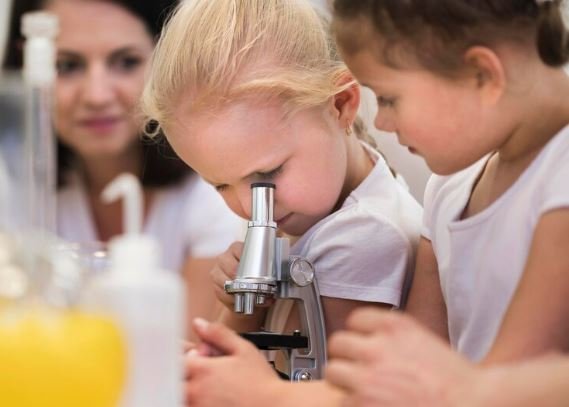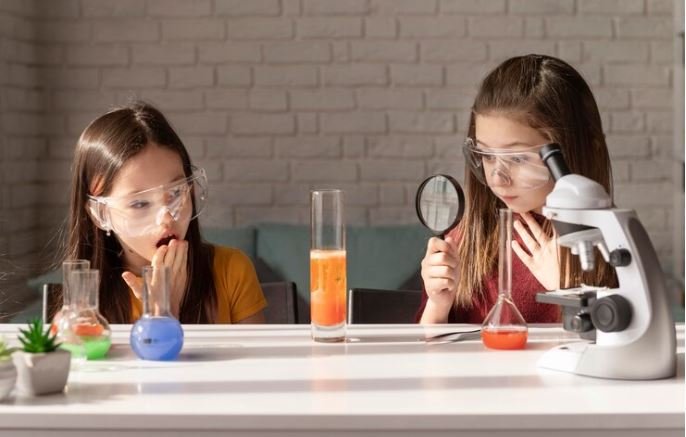Science fairs are the best part of being a 3rd grader! They empower you to try out cool things, do experiments and understand how stuff works. The main focus in 3rd grade science fair projects is to be fun, and creative and develop new things about the vast world of Science.
Either way, from plants and animals to electricity or space beyond this world science experiments give you the feel of a real scientist. Here is a list of some exciting science fair projects for 3rd graders; we are sure the kids will enjoy most and look forward to not only participating in them but also presenting their work before everyone.
We will go over several simple and fun ideas which can be made using a keyword of 3rd Grade Science Fair Projects. Whether you are curious as to why leaves change colours or have thought deeply into the nature of white bears- this site will fulfil your need!
What constitutes a good science fair project?
Any good science fair project begins with a question or problem that you want to solve. And that scientists are curious about everything — to know how it works or why things happen. The best part? You do not need any fancy gear or cost equipment. We use lots of things that you will be able to find around your home or can get from a shop.
A project should:
- This could also be in the form of your hobbies coming through as you can see below (Again, Be something that interests you)
- Have you ever heard of an IO Physics lesson or a How Things WORK??
- -The scientific method: Ask a question, make a guess (hypothesis), test it with an experiment and share what you found out.
Payment methods, price points and usage will look a little different in 2025 (science fairs everywhere) but it’s just another indication that marketers need to expand beyond traditional media planning strategies if they expect to capture the increasing audience attention. With that in mind, it is time to take a look at some ideas for the greatest 3rd-grade science fair project ever!
Exploring Plants and Nature
If you do a science fair project to be done, the plants are an excellent place to start. They are everywhere and have so much to teach us. Similarly, some of the questions that you might have are; why do plants require sunlight or how does water reach up to plants? These are perfect science project questions.
Have some fun and test how different waters affect plant growth. Water three different plants with regular tap water, saltwater and sugar water to find out which plant grows best. It will also show you how plants uptake water and that some waters are better than others.
Project Cool It explores why leaves change colours. Dry green leaves can be collected at multiple points in the year, changing as they go from bright greens to dark oranges and reds. This is due to the process of making food and sun that they receive.
The Wonders of Weather
Weather is another subject that can be taken up as a third-grade science fair project. Science ExperimentsIf you have ever wondered how clouds are formed or marvelled at a rainbow, weather experiments could be just the ticket.
You can replicate this effect in your home by shining a light through a glass of water. This illustrates that sunlight is a composition of colours, and as it strikes the water’s surface area, light disperses by bending in all directions forming a rainbow.
Another cool experiment is to try making a rain cloud in a jar Simulate how clouds fill with water and rainConcepts-Shaving creamWaterFood coloringInstructionsFill a container about 3/4 of the way full with water. So this is a nice and easy way to describe the water cycle that you can show everyone at your school science fair!
More than just what is but how it moves: gravity and motion
Why So What Have Ever You anythingHomework Fall To Do to The the Ground or How Objects Move Here is where the gravity /motion comes into play. You can have experiments in your science fair that explain how these agencies are created and work.
An example of this could be a simple pendulum made from string and weight, i.e., a small ball etc. This will allow you to see how the pendulum swings back and forth with gravity. You can also experiment with different masses to see how they change the motion of a pendulum.
Friction is a force that acts to slow things down when they move, and you can easily toss together materials for your friction project. By designing a small ramp to observe how the speed of a toy car changes according to different types of surfaces, such as carpet, wood or plastic. In this lesson, you will learn about the speed of an object in motion and how it changes when friction is applied.
Magnets and Electricity
Magnets and electricity both make intriguing science fair projects for kids. By using magnets, you can investigate how things attract and repel without even touching (Encarta).
Magnetic Maze Create a maze on your tabletop using paper clips and move around them with the help of a magnet. You control the metal object over the maze by moving that magnet under a paper. This experiment, personally one of my favourites is activity 5: Magnetic fields and how to get an object moving using them.
You can wire a battery and light bulb together in something known as a circuit for electricity. That will help you to understand how electricity works and what circuits are required to supply energy to the day-to-day things we use, such as lamps or toys. You can also experiment with different types of stuff that keep your energy from conducting versus not!

Learning About Animals
For those who are interested in animals, there are several science fair projects you can use to demonstrate this theory. For example, watching animals interact in varying habitats.
A small ant farm to see what happens when you turn the temperature up or down, as well as how they react to light is a good example. This can help you understand how animals acclimate to their environment.
An alternative is an ornithological investigation. You can experiment with different bird feeder types and see which attracts the most birds. This project will provide you with knowledge about what different species of birds prefer to eat and how they continue in their survival as a natural entity.
Fun with Water and Liquids
Another fantastic subject for a 3rd-grade science project is water. Water experiments can teach you about density and temperature, but also how objects float or sink.
Introduction to Density A fun unit would be Layers of Liquids. Play a round of showing kids placing honey, oil and water into a jar on top of each other to see layers of it.
That is because of the different densities between the liquids, some are heavier than others. You could alternatively carefully drop some small implements into the jar and see where they land within the layers.
Minute to Win It Water Experiment See how heat affects water with this challenge. Water, for example, can be frozen or boiled and reassessed as liquid solid or gas. This project covers the three states of matter- solid, liquid and gas; It explains how heat can be used to change water into these different states.
Exploring Space
Space: A science fair project is incomplete without a universal subject, and what can be better than space? If you looked at the sky and wondered about what else is up there, then a space-orientated project might be your choice.
A model of the wide solar system could be an elegant project idea. Practice planets with balls or balloons to move around the sun. It will provide you with a sense of the planet’s relative sizes and their spacing in space.
This also allows you to investigate how craters are made on the moon. Meteors crashing into the surface of the moon and making craters — You can mimic this by dropping different objects (rocks, marbles or whatever else you fancy) in a tray full of flour. This project is also an interesting way to learn about how objects in space affect planets and moons.
Sample Science Fair Project Presentation
After selecting your science fair project, the next step is to brainstorm how you will present it. If you want to get some information in advance, here is what I learned during the training:
Don’t Complicate it: Your project doesn’t have to be too complex. The more stuff you know the better as it helps to just really understand your project so you can explain it.
Photos and drawings: Using images can help others see what your project will look like. You could even add pictures from your experiment, or draw some diagrams to help others how things work.
Get comfortable explaining your project: Before the science fair, practice telling a couple of buddies or loved ones about it. This way, when you describe it to the judges they will see how confident you are about what happened.
Be interested: If you are not excited to do your science fair project, no one else will be excited about it. Demonstrate how much fun you had working on it and what you learned.
Conclusion
3rd graders have to think of science fairs as their opportunity to investigate the world and discover how things exist. Ranging from plants that you can grow and magnets to study, all the way to using a star chart this guide will help have everything you need for great science fair projects! You can put together an amazing project that will blow past your teachers and classmates using top-of-the-line materials and below, like the above picture.
If you get the best idea at hand with a tad bit of creativity and inquisitiveness then definitely your “3rd Grade Science Fair Projects” would be a great success.
Pick a subject you enjoy, make sure to run through the steps of how science works and above all else have fun! Learning Science expands your horizon, it helps you to know the world better and who knows…you might end up discovering something extraordinary!


